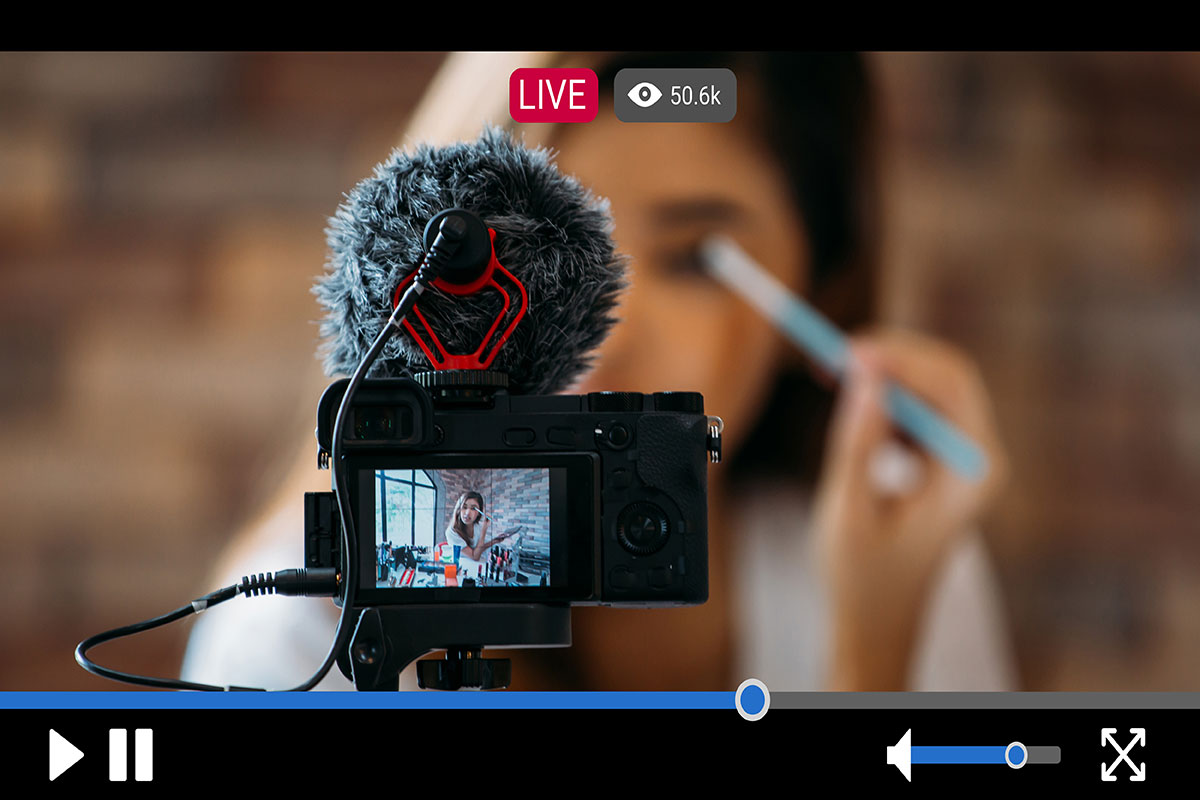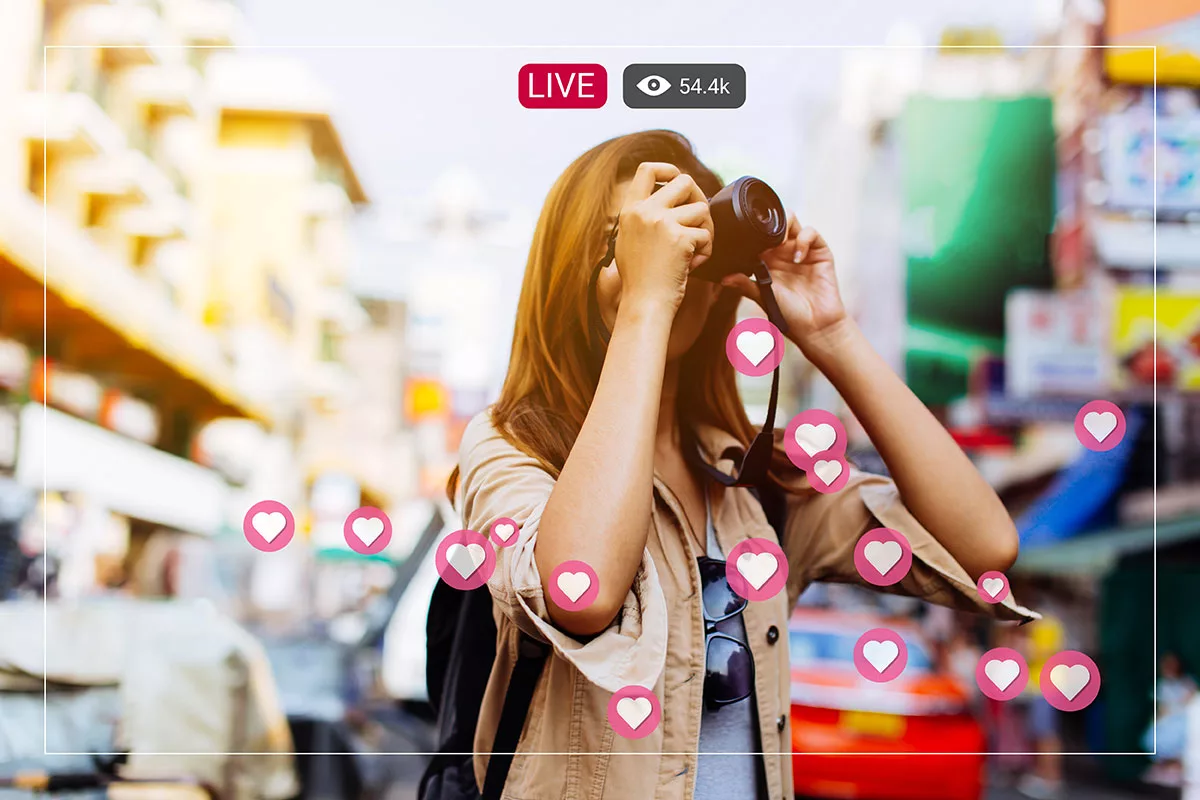By The Pollack Group
The multi-billion-dollar influencer market is a hot button issue – with some Instagram personalities pulling in more than $5,000 for a single social media campaign post. While many believe that “bubble” can pop at any time, influencer marketing can be a powerful and useful campaign tool to expand a brand’s reach and increase product/service awareness.
A successful social media influencer builds a large and engaged fanbase of followers by posting content in a regular cadence that their community has a particular affinity for or interest in. The more content they produce, the more traction they gain. Over time, this fanbase will look to the influencer as an authority on the topic and take the influencer’s recommendations to heart. The influencer gives that product or brand exposure authentically on social media by mentioning a product or brand in a static post or Instagram story.

For example, a makeup enthusiast begins to create content (how-to videos, photos showcasing different beauty looks, product recommendations, etc.) on her social channels using hashtags. Slowly, other makeup enthusiasts follow her content – and become her audience. As this community of fellow makeup enthusiasts grows, brands take an interest. In turn, they approach the makeup enthusiast, a certified influencer, to see if she will test and showcase their products. The brand hopes that her social media marketing will teach her followers, and even lead them to purchase from their brand or products they produce based on that influencer’s recommendations.
In a sense, an influencer’s content can act as advertisements that a potential customer opts to receive– only by following the influencer who posts the content showcasing the product or service. Through these newly established influencer relations, brands gain wider access to its target audience. This influencer-generated content can amplify product and key seasonal moments, including launches and special promotions.
Increasingly, brands are offering influencers special affiliate links to promote to their audiences. These influencer relations allow brands to reach their target audience through social media marketing by utilizing celebrity endorsements. In exchange for content promotion, the influencer is awarded extra benefits – perhaps products, payment, or a percentage of sales for every purchase that their audience makes – through the affiliate link.

In this way, an influencer marketing campaign boosts customer audiences’ awareness and acts as a sales channel. However, an influencer campaign’s benefits could be even more beneficial to brands’ media relations efforts.
Increasingly, influencers serve as both lightning rods and litmus tests for products working to gain popularity and boost awareness in the market. The content they curate creates exposure, lending to a product’s success.
Not only does having an influencer showcase your product bring awareness to their followers increasingly, but reporters are also looking to social media to glean products for their roundups or spotlight articles. It is essential to build a groundswell of influencer fans as proof of concept to the press in a crowded space. In addition to one-time seeding, it is equally important to secure ongoing partnerships with influencers to secure testimony and content to leverage across additional platforms.
Going back to our makeup influencer example: Let’s say a newly launched brand approaches our makeup influencer to test out and review their new mascara that incorporates a special kind of purple pigment. She, plus dozens of other influencers, begin to populate social media with glowing reviews. The brand can take their reviews and approach the reporter covering makeup at Refinery29, Elle, or Cosmopolitan and say that the newest trend in makeup is purple pigmented mascara – and social media is buzzing. With dozens of big names talking about the purple pigment trend, it’d be hard for a reporter to turn down such a story.

How do you evaluate the right influencers to work with? The first step is to identify influencers in your target market. As social media grows, so do the social media influencers. To find the right influencer to work with, you must narrow it down. The key to a successful influencer marketing campaign when engaging with US-centric influencers is identifying those who are authentic, have the minimum number of followers your campaign is looking for, and fall within the target customer market segment.
Authenticity is key: influencers build their loyal followings by being transparent and consistent. An influencer who has touted and embraced going makeup-free is not an ideal candidate for our purple pigment mascara. However, neither is a makeup influencer who only uses natural tones and colors.
To find the right influencers, it is important to identify trending hashtags that are likely to curate content and build an account’s following. The next step would be to review the clout of the influencers using those hashtags. Of course, not all influencers are created equal. When establishing influencer relations with social media standouts for a brand campaign, it isn’t as easy as going for the largest numbers. Rather, the key is to find the influencer who shows the most engagement with the brand’s target audience, whether they have a larger or smaller audience.
Mega influencers are often celebrities – with millions of followers – however, their power is fame, not influence. With followings ranging from 10,000 to the 100,000s, micro or nano influencers have bigger muscles when it comes to swaying or inspiring their followers’ behavior. The engagement between social media influencer and follower is crucial. Sharing content is not the only element to creating a successful influencer marketing campaign. It is utilizing the relationship an influencer’s followers develop with that influencer. The type of influencer that can sway his or her followers to complete a purchase is one that the followers feel connected.
Once an influencer is identified, it is important to evaluate their average engagement rate to determine the effectiveness of their reach and resonance among their audience. The brand should connect with the influencer to gauge their interest in participating in a campaign and negotiate the influencer marketing agreement’s terms.






